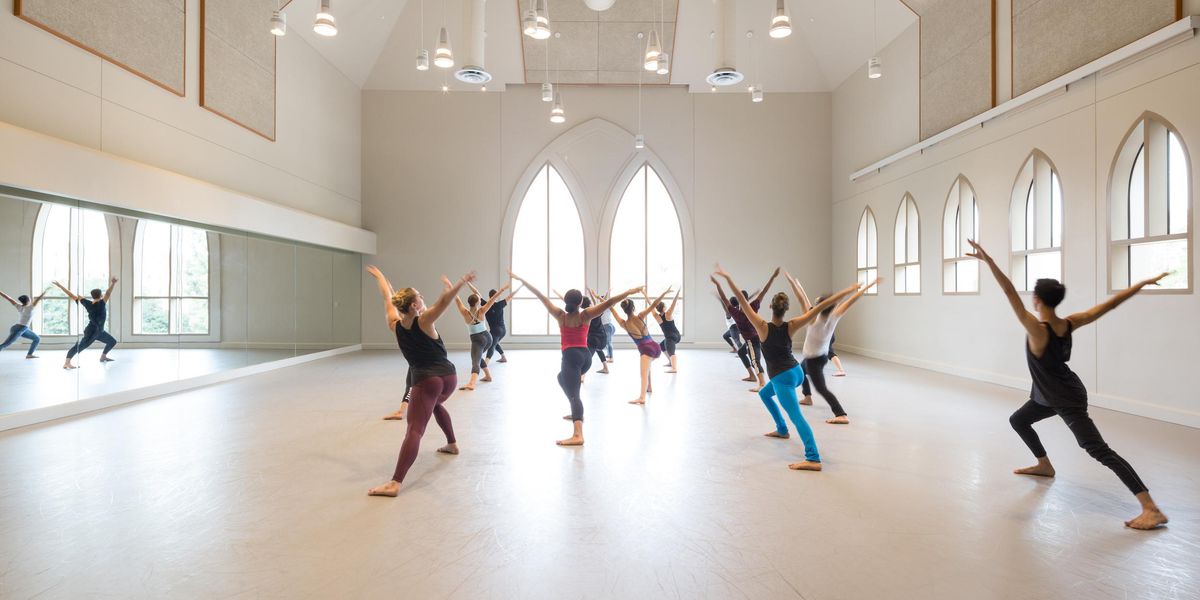2013 Auditions Guide: Holding Her Interest
Photo: Kyle Froman
Her audition hasn’t started yet, but Karole Armitage already has a feeling about which dancers she’s going to hire. “I can pretty much tell as soon as they arrive,” she says. “Of course, you discover more by actually watching them dance. But it’s amazing. You see so much just from the way someone enters the studio.”
Armitage Gone! Dance needs three new men and one woman, and 134 dancers have made the trek to an open call at the company’s Jersey City studio space. AG!D just moved in a month before, so the space (in a former factory reincarnated as a mixed-arts facility) is still pretty raw: At the moment, the studio only has three walls. Where the fourth should be is a hallway connecting the two halves of the building.
“I’m looking for very specific people, personality types, sizes,” Armitage tells the first of three groups, ignoring two men in Moishe’s Moving T-shirts walking by. She mentions in particular one petite woman with an odd, distinctive movement quality whom she needs to replace. “It’s like making a great meal: I need all the right spices to come together.”
Armitage launched AG!D in 2004 after making a name for herself as “the punk ballerina” in the ’80s and choreographing throughout Europe in the ’90s. Because her movement blends diverse aesthetics, AG!D’s members come from a variety of backgrounds, reflected in the outfits of the dancers who’ve shown up today: They run the gamut from socks and asymmetrical haircuts, to jeggings and crop tops, to pointe shoes and pink tights.
AG!D dancer Emily Wagner starts off the audition by teaching a ballet barre in the center. Armitage watches from a folding chair with four company dancers sitting alongside her. Throughout the day, they’ll get up and demonstrate various excerpts from her repertoire. “We work in such an intimate way, I like everyone to be involved,” Armitage explains. “It’s also one thing for me to tell the people auditioning, ‘Do it your own way,’ and another for them to see three of my dancers each doing it their own way.”
A yellow legal pad on Armitage’s lap lists every auditioner’s number. Whenever someone catches her eye, Armitage pulls their resumé from a manila folder, then makes a note. Next to one number, she writes “great technique, beautiful, nice dancer.” Next to another she notes, “very pretty.” Wagner points out a woman she likes. “She has a nice body,” Armitage concedes, “but I’d like her to have a little more
awareness.”
Samantha Farrow, #19, is trying not to let the lack of a barre throw her off. “I’m already anxious, I’m trying to warm up, and there’s nothing to hold on to!” she says. “But I can’t get caught up in technique. Usually directors are looking for people who are open and comfortable being themselves—and who can show that as soon as possible.” Currently dancing in a national tour of Wicked, Farrow, 26, says she’s intrigued by Armitage’s movement quality and likes that the company’s part-time schedule would give her the flexibility to do freelance projects on the side.
After the warm-up, AG!D member Abbey Roesner teaches an adagio, then Jacob Michael Warren gives a phrase from Mechanics of the Dance Machine, a new piece Armitage started choreographing earlier that week. “Snake the arm through, around, out,” he says as he demonstrates the twisty, liquid movement. “It’s not about positions, it’s the path, pushing through the air. Really move through the spine. And here, it’s not a passé, but like a puppeteer pulls your knee up.”
Armitage gets up and walks along the hallway for a better look as the dancers, eight at a time, perform the combination. When she moves in front of them, some dancers purse their lips and stiffen their eyes; others brighten nervously in an anxious smile.
“I’m looking for charisma, sensuality,” Armitage says later. “My dancers have to have the most meticulous ballet technique, but can’t be stuck in ballet. Finding somebody with great musicality, incredible personality, multiple kinds of technique, it’s just not that easy. And the erotic attraction. People need that X factor that makes you want to look at them.”
Seventeen dancers make it past the cut—eight men and nine women, including Farrow. The rest line up to say thank you to Armitage, who asks a couple dozen to stay in touch. “You’re beautiful, I enjoyed watching you,” she says to one woman. As another walks away, Armitage murmurs, “She’s really a great mover. It’s terrible not to keep her.”
The remaining men are a varied bunch, but the women are all exotically beautiful and sharply dressed in leotards and black shorts or tights. Armitage turns over a fresh sheet of paper to make another list, this time including names and heights. Next to one she writes “eating disorder,” and also notes this concern on the woman’s resumé.
Over the course of the afternoon, the dancers learn a handful of combinations. They’re asked to show different dynamics and moods, some solo work and some partnering. The atmosphere loosens up a bit, even as the dancers struggle to figure out which arm goes under which wrist, at what point her calf switches to the other side of his neck.
Armitage teaches the dancers a phrase herself to get a sense of their give-and-take. “So much of what I’m looking for is their creative imagination,” she says. “They have to be absolutely willing to go out on an edge.” The combination she gives is only eight counts but it’s jam-packed. When she demonstrates, her feet stamp so loudly that they echo throughout the studio. At one point, she tells the dancers, “Don’t be so pretty.”
Lourdes Rodriguez, 25, is eagerly throwing herself into the movement. She danced with Armitage two years earlier when the choreographer set a piece on her at the Dance Theatre of Harlem Ensemble. “Karole expects you to bring something unique to the movement,” says Rodriguez. “I like that she wants you to dance in a way that highlights your talent, not just what makes a certain line.”
One of the final tasks of the day is an improvisation exercise. “Kind of squiggle,” Armitage directs. “There’s no ‘right.’ What’s weird is possibly interesting.” Armitage uses improv to see the dancers’ natural movement instincts, whether somebody’s energy is more electric or lyrical. “And sometimes,” she says, “I get people, especially ballet dancers, who seem uptight, then when they improvise they suddenly know how to be themselves.”
As 6:00 p.m. approaches, Armitage sits the auditioners down for a chat. “I want them to be very adult. I tell them these are how many weeks you’re working”—she aims for at least 26 so dancers can collect unemployment—“this is how much money you’re getting, these are the tours. I want them to understand that they’d be earning three times as much on Broadway, that they’d have a much easier life in a more conventional company, and they really have to think, Does this mean enough to me that I really want to do it?”
For Rodriguez, who was asked to become an apprentice the next day and is now a company member, the answer was yes. “I’ll just freelance, possibly pick up other dance jobs, pray that more weeks are added to the season,” she says. One male dancer also joined the company, and several dancers have joined as guest artists.
“For the most part, auditions are impossible. You just can’t get to know someone deeply enough,” says Armitage. “Too many dancers are afraid to be themselves in an audition—it’s hard when you’re nervous and want to be perfect. But really, it’s not about being perfect. It’s about being interesting.”
Jennifer Stahl is
Pointe’s senior editor.





